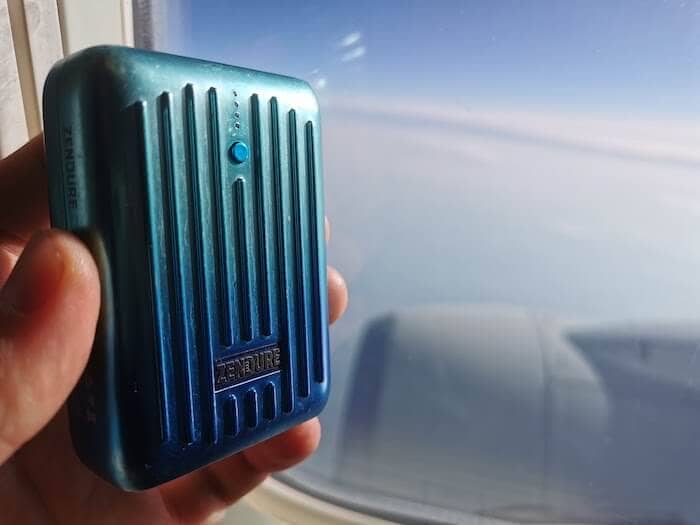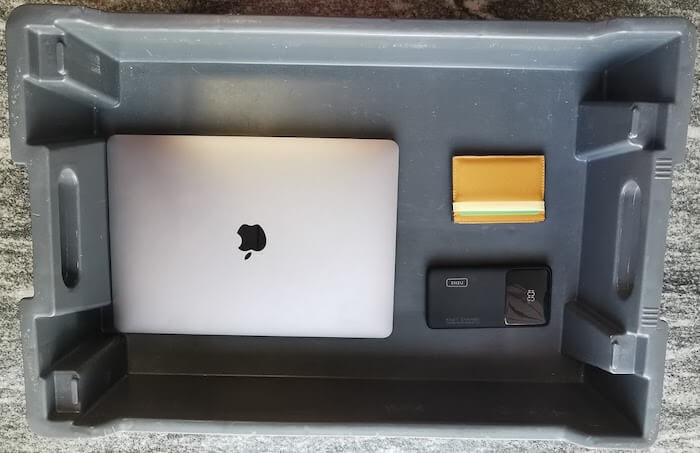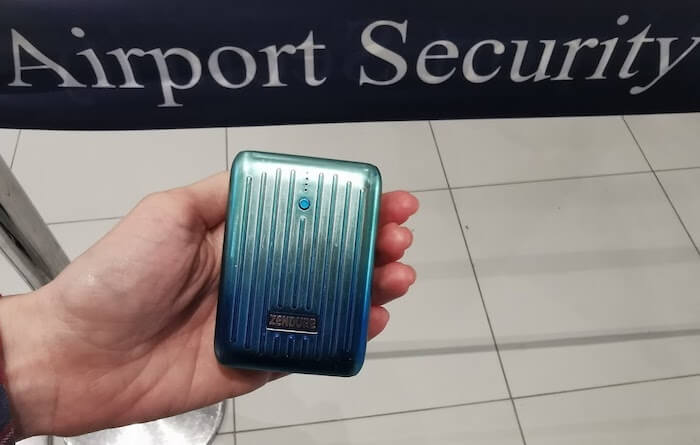
How to Find Out the Wh Capacity of Your Power Bank
The Wh capacity of a power bank is usually mentioned on the device, packaging, or user manual. Watts per hour, or Wh, is the unit of measurement for the amount of energy consumed by electrical equipment in an hour. If your power bank does not provide this information, you can calculate it using our Wh calculator by entering the mAh and voltage.
Most power banks have their Wh capacity labeled, but if not, you can calculate it using the following formula: wh=(mah×V)÷1000 where mAh is the milliampere-hour rating of the battery, and V is the voltage.
Step-by-Step Calculation
- Find the mAh rating: This is usually printed on the battery.
- Identify the Voltage (V): Standard USB batteries typically have a voltage of 3.7V.
- Apply the formula: Multiply the mAh rating by the voltage and then divide by 1000 to convert to Wh.
For example, a 20000mAh power bank at 3.7V would be calculated as:
(20000mAh×3.7V)÷1000=74Wh
Understanding the Results
- If the Wh rating is less than 100Wh, it’s generally allowed in carry-on luggage without special approval.
- For batteries between 100Wh and 160Wh, you may need airline approval.
- Batteries over 160Wh are not allowed on Emirates flights.
Emirates’s Policy on Other Types of Rechargeable Batteries
Spare Lithium Batteries
If you want to carry spare lithium batteries on the trip, the Emirates website states that you may bring no more than 20. Additionally, these batteries should be packaged separately to prevent short-circuit. We recommend storing them inside the package they were purchased since this is the safest option.
Also, you can bring lithium batteries containing no more than 2 grams of lithium.
Portable Medical Electronic Devices (PMED)
If you are traveling with Portable Medical Electronic Devices (PMED), the battery may include up to 8 grams of lithium. Remember that you should also request permission to carry gadgets equipped with such batteries, which you will almost certainly receive.
Personal Electronic Devices (PEDs)

Emirates permits travelers to bring up to 15 personal electronic devices (PEDs), including smartphones, tablets, and laptops. As long as they are turned off, you can transport them in either checked or carry-on luggage. It’s worth noting that the lithium metal content of these gadgets’ batteries cannot surpass 2 grams.
In addition, the Watt-hour rating of lithium-ion batteries should not be over 100Wh, similar to power banks. It is also possible to obtain approval for lithium batteries with a capacity of no more than 160Wh and a lithium content of no more than 8 grams. Moreover, devices incorporating non-spillable batteries must not exceed 12V in voltage and 100Wh in watt-hour rating. Also, each passenger can carry a maximum of 2 spare batteries either in carry-on or checked baggage.
E-cigarettes and Vaping Devices
E-cigarettes and vaping devices are also allowed on Emirates Airlines. Still, they should be protected individually and prevent accidental activation.
Drones
Drones must be transported in checked baggage without batteries or with batteries secured within the drone. If you removed the batteries, you should bring them with you in carry-on baggage to the cabin.
Smart Bags
The same limitation applies to Smart Bags, as they contain batteries to power electronics. Passengers can bring their Smart Bags into the cabin as long as they are turned off. The Smart Bag’s battery must be detachable; otherwise, you will not be permitted to bring it on the flight. Additionally, you can place the Smart Bag in the checked baggage as long as you remove the battery and carry it to the cabin in carry-on baggage.
Collapsible Mobility Devices
Regarding the collapsible mobility devices that work with lithium-ion batteries, the lithium-ion batteries need to be removed and taken into the cabin. The batteries for such a wheelchair should not be over 300Wh, or in case of a device that needs two batteries in order to work, each of the two batteries should not be larger than 160Wh.
A maximum of a single spare battery of maximum 300Wh or two different spare batteries that are under 160Wh can be carried in the cabin. Also, permission is required before boarding. Wheelchairs or other similar mobility aid equipment powered by spillable batteries are also permitted.
Why are Airlines so Concerned With Batteries?

Batteries, particularly lithium batteries, are dangerous due to their ability to generate heat up to 600°C and more. In addition, these batteries can catch fire due to a short circuit or being stored carelessly, such as being squeezed into a container.
Batteries are subject to restrictions as a result of these threats; nevertheless, manufacturers have attempted to make them extremely safe by adding chips that prevent short-circuiting and so on.
However, there is still a slim chance that they may fail and cause catastrophic accidents. Besides, some manufacturers place profit ahead of quality and utilize low-quality batteries to keep costs down.
As a result, their products frequently fail soon or cause battery-related issues, necessitating the development of battery regulations. Yet, incidents involving batteries continue to occur.
According to the most recent statistics from the Federal Aviation Administration, “air/airport cases involving lithium batteries transported as cargo or baggage” occur on average once every 50 days. One of the most common incidents occurs when a passenger’s electronic device slips down the side of the seat, and the passenger attempts to reposition the seat to grab it.
Unfortunately, in the majority of cases, the PED crushes and ignites. As a result, it is recommended that you avoid relocating the seat and alert the crew.
Furthermore, Emirates was not immune to these kinds of incidents and had a history of unpleasant experiences. For example, in 2010, one of their UPS planes crashed, killing many crew members. Later, it was discovered that the smoke-detection systems failed to alert the crew on time and that the fire’s heat damaged the crew’s oxygen supply.
On the other hand, toxic smoke began to fill the cabin within three minutes of the initial alarm, blocking the pilot’s vision of the controls and terrain, and resulting in the tragedy.
Conclusion
Keep in mind the airline’s rules and regulations, particularly those related to batteries, because you may be required to leave your expensive equipment at the airport. We recommend reading: Can you bring portable chargers on a plane? 3 TSA rules you need to know in case you’re interested in learning more about Transportation Security Administration (TSA) regulations.
